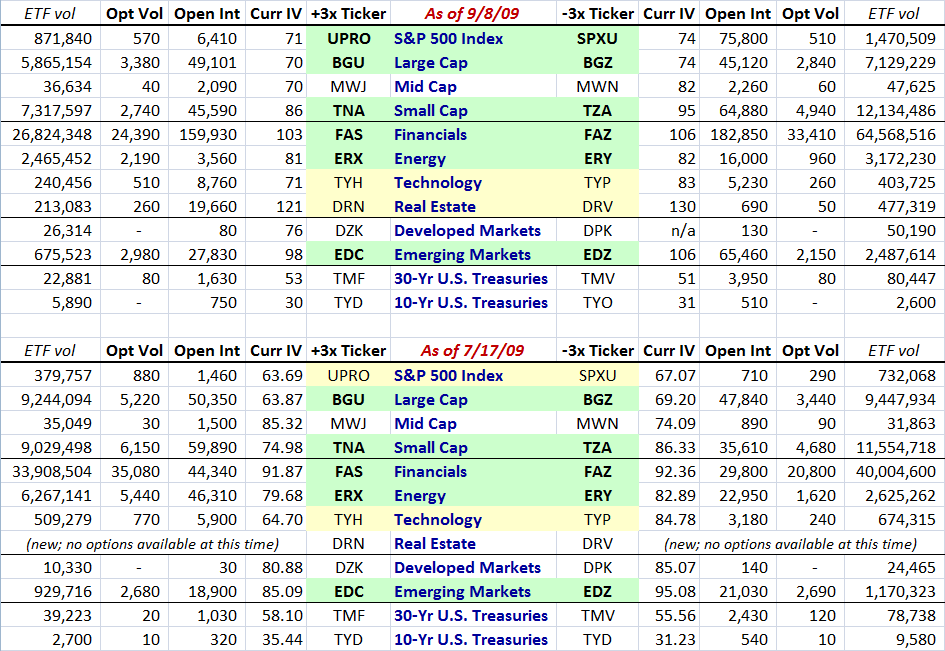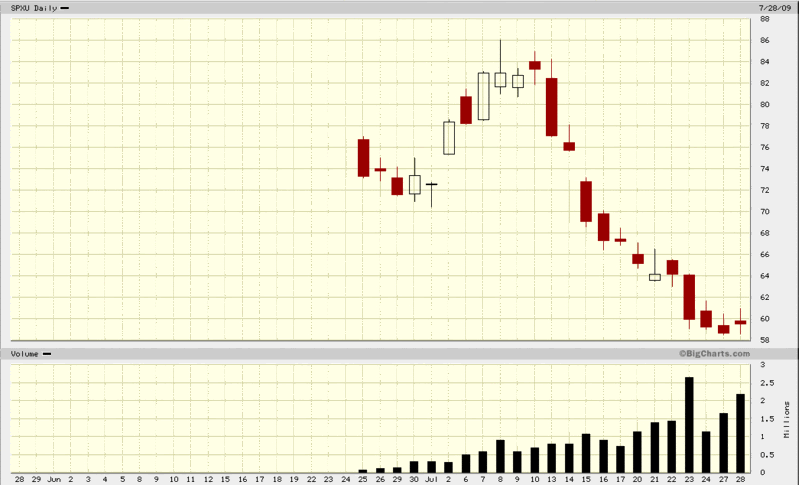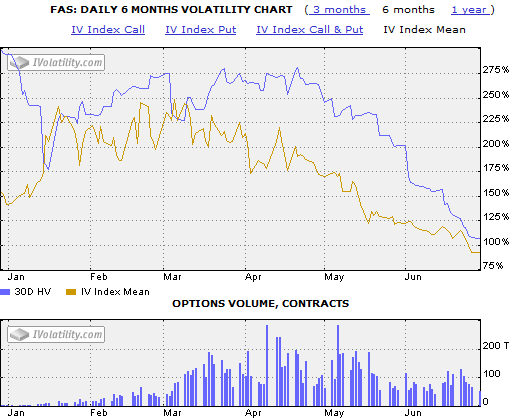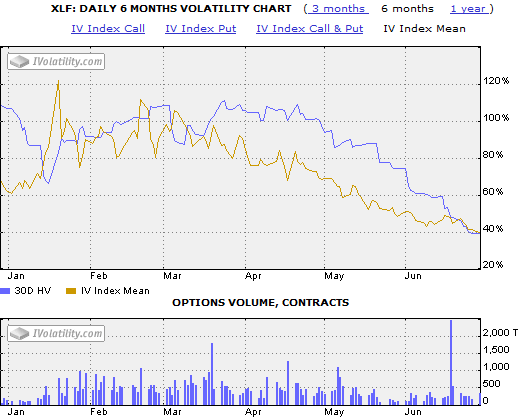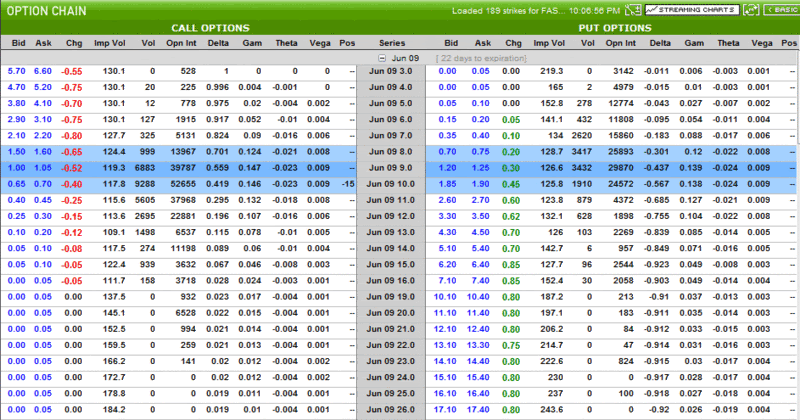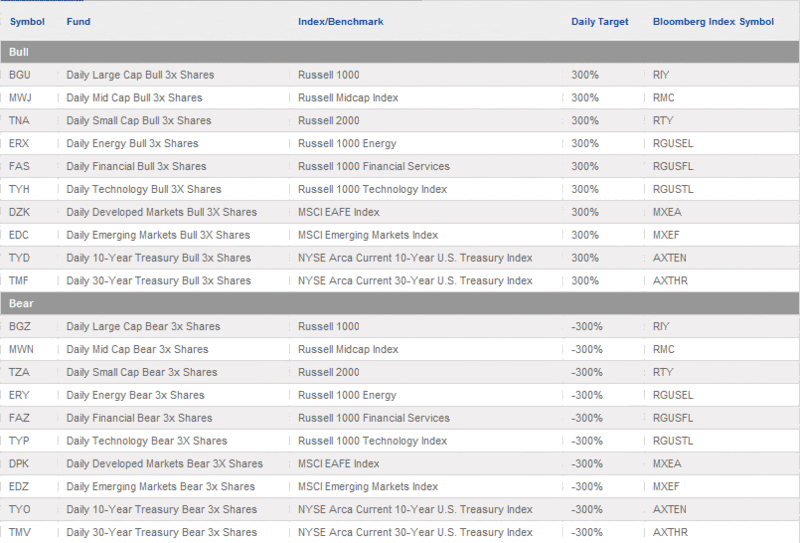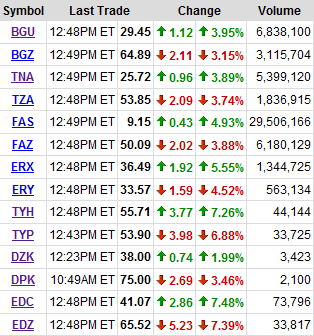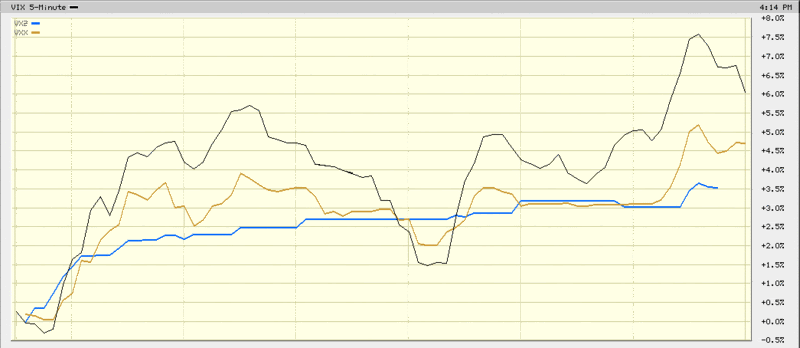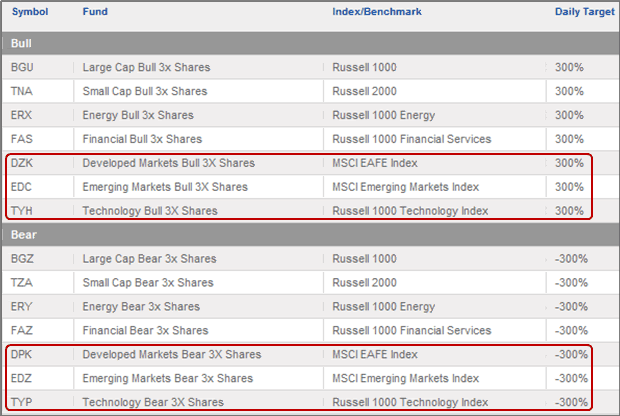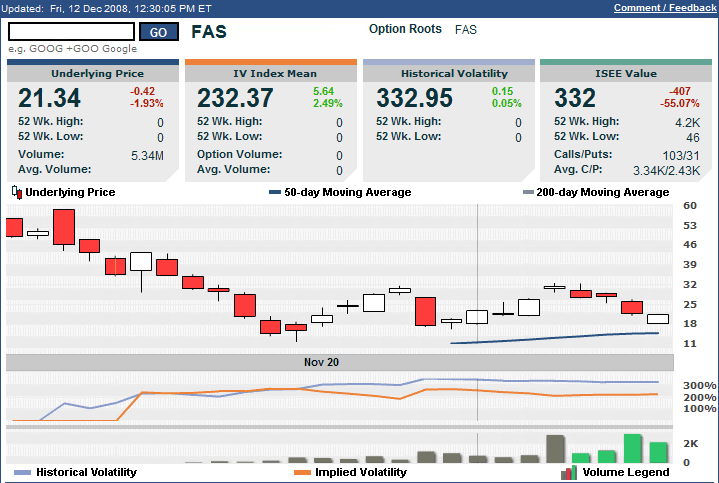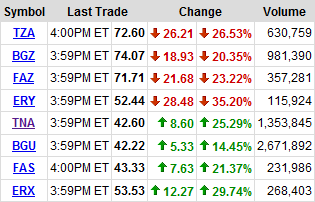Direxion and S&P Bring Dynamic Volatility Hedging to ETFs with VEQTOR
As the ETF space continues to evolve and push into new territory, such as strategy-in-a-box ETFs and more actively managed ETFs (e.g., QAI, ALT, PQY, PQZ, GVT, PSR, RWG), it was only a matter of time before a volatility play was added to the pool of actively managed ETFs.
Credit Direxion with being the first to venture into the realm of actively managed ETFs with a strong volatility component. In a recent SEC filing, Direxion unveiled plans to launch an intriguing new ETF under the name of S&P 500 Dynamic VEQTOR Shares. This ETF will seek to track the S&P 500 Dynamic VEQTOR Index, which was launched by S&P back on November 18, 2009.
So far, so good.
Here is where it gets interesting. The VEQTOR index (and ETF) have three components: equity (S&P 500); volatility (S&P 500 Short-Term VIX Futures Index, aka VXX) and cash. Based upon several rules and formulas, the index attempts to derive – on a daily basis – the ideal target volatility allocation. This is accomplished by evaluating realized volatility and implied volatility, determining the implied volatility trend (using 5-day and 20-day IV moving averages) and arriving at a target index volatility allocation based on realized volatility and implied volatility data. Once the target volatility allocation has been determined (the range is from 2.5% to 40.0%), the balance of the index is populated with the S&P 500.
Just to make things more interesting, the VEQTOR index also has a stop loss provision which specifies that if aggregate losses during any five day business period are 2% or higher, the index will move into a 100% cash position.
When the VEQTOR ETF is launched, I will have a lot more to say about this fascinating product. In the meantime, those interested in additional information on the VEQTOR index and ETF should try:
- S&P 500 Dynamic VEQTOR Index - Splash Page
- Direxion Shares ETF Trust II S-1 Form SEC Filing (covers 11 different ETFs)
For more on related subjects, readers are encouraged to check out:
Disclosure(s): neutral position on VXX via options at time of writing


